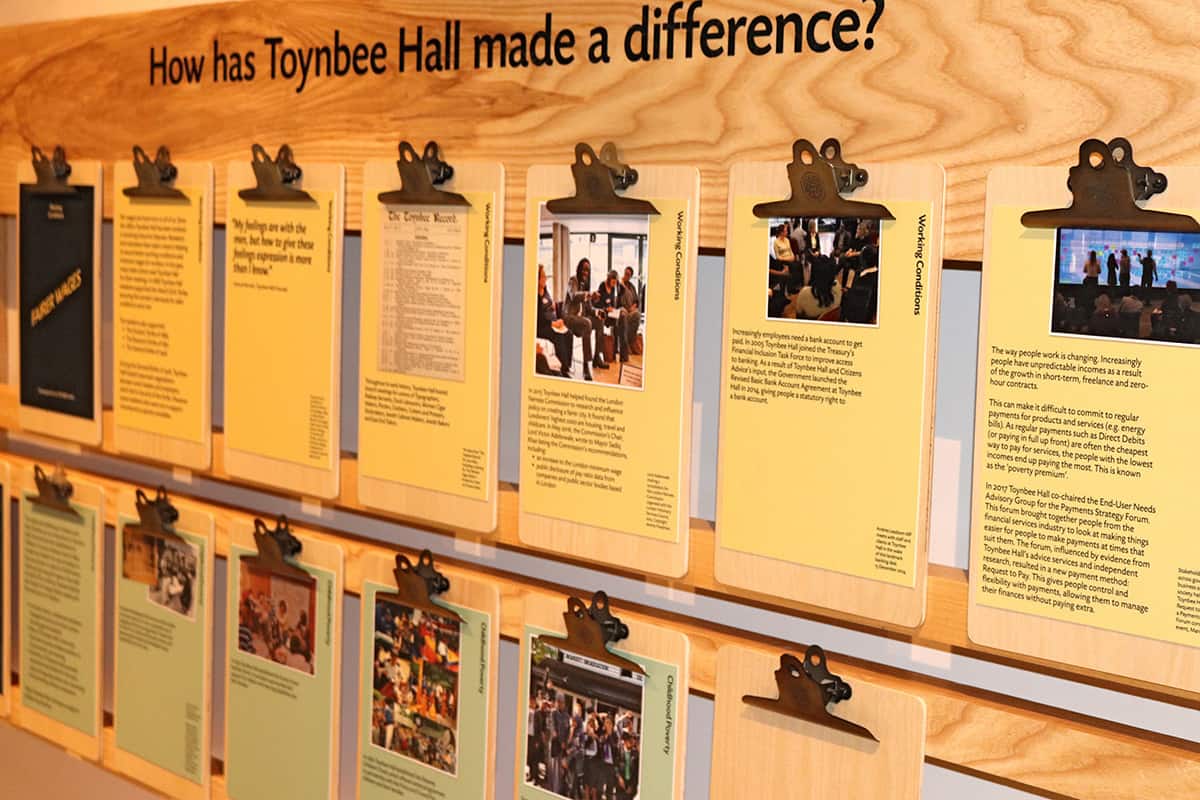There is a framed photograph hanging on the wall of the recently refurbished Toynbee Hall that shows its first ever residents, the class of 1885.
The 14 white male scholars had travelled from the hallowed halls of Oxford and Cambridge to live and volunteer in the settlement; experiencing the East End’s extreme poverty first hand in order to develop new ways for bringing about social change.
Clement Attlee, William Beveridge and John Profumo were all products of the then radical approach to social reform, which was championed by Church of England vicar Samuel Barnett and his wife Harriet to give future leaders the opportunity to develop practical solutions to poverty.

More than 130 years later, it’s a very different class photo of the volunteers who moved in this summer following a three-year restoration of the Grade II-listed Tudor mansion off Commercial Street. The building redevelopment, which was part-funded by the Heritage Lottery Fund, is part of a large-scale regeneration scheme that will combine Toynbee Hall’s practical advice services with heritage projects showcasing its pioneering social reformation principles.
Soon, all wellbeing and advice services will be run from the extended and refurbished buildings, as well as research work, community engagement programmes, education and training.
The current cohort of five residential volunteers are Toynbee Hall’s first since the early 2000s, and live rent-free in exchange for around 15 hours per week dedicated towards projects that celebrate the charity’s history or further its aims for social change.
French social worker and Toynbee’s social action innovative volunteer, Annick Metefia, estimates that she might be the first woman of colour to take up residence in the small living quarters beneath the gabled roof, but says the organisation’s mission remains largely unchanged.
“Toynbee Hall has always been about finding innovative ways to tackle poverty. A lot of what we do now is connecting the public with our history and although that history is largely dominated by white upper and middle class men, it has made us very aware of that power dynamic and of finding ways to challenge it.
“As much as we celebrate the big names like Clement Attlee, we don’t want them to be our only focus.”

To that end, the permanent exhibition lining the walls documents a history as diverse as the community it serves, from supporting the 1888 match girls’ strike for fairer wages, to campaigning against anti-semitism in the 1930s and launching a debt advice service in 2006.
Volunteer storyteller Sinead O’Brien is attempting to further balance the gender scales by developing an ‘alternative’ oral history for Toynbee Hall with local community groups, told through the voices of females who contributed to its cause.
Toynbee Hall chief executive, Jim Minton, says the exhibition and heritage projects, combined with practical services, provide an opportunity to learn from the East End’s strong history of social change.
“It’s appalling that today so many Londoners still face real challenges which keep them in poverty,” he says.
“Community-based organisations like Toynbee Hall have a huge responsibility to help people meet those challenges, but also to amplify their voices and advocate for change locally, across London and beyond.
“We want our redevelopment and the new exhibition to show the ways that throughout the past 130 years people living in the East End have taken on the challenges facing them and built a stronger community together.”







